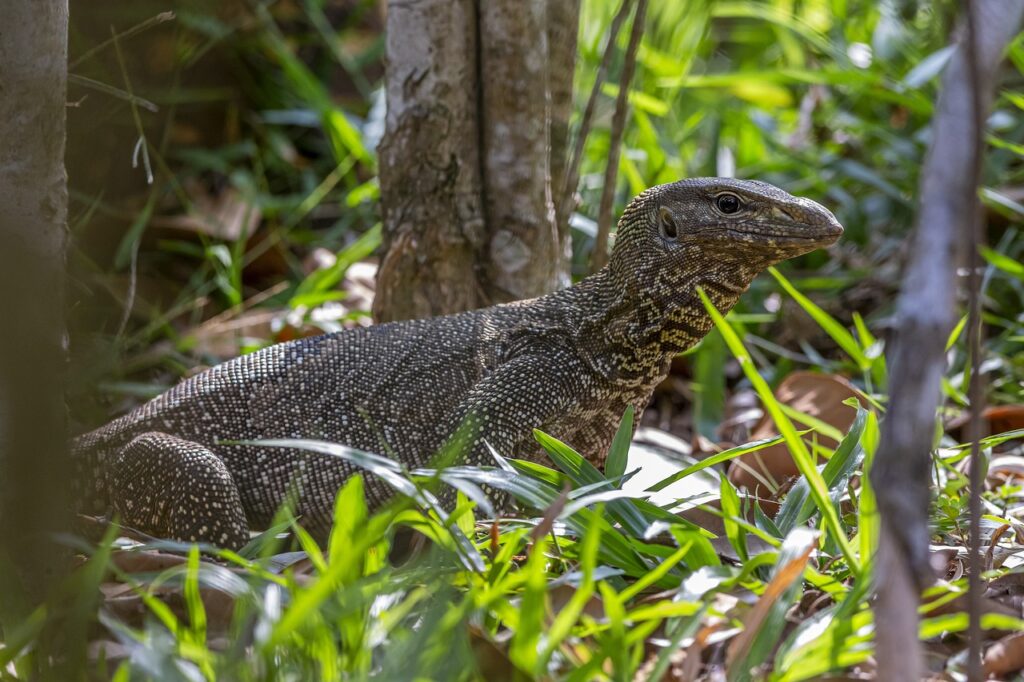
Water monitor lizards (Varanus salvator) carve out a distinctive niche within the ecosystems of Southeast Asia and parts of Africa, thriving in aquatic and semi-aquatic environments. These remarkable reptiles are often found near freshwater sources such as rivers, lakes, swamps, and mangrove forests. Their affinity for water is not just a preference; it shapes their entire lifestyle, making them adept swimmers capable of diving underwater in search of food.
As carnivorous opportunists, water monitors boast a varied diet that reflects their adaptability. They feast on fish, amphibians, birds, and small mammals, often scavenging from carrion when the opportunity arises. This diverse diet places them at the top of the food chain in their habitats, where they serve as apex predators. By preying on a range of species, they help regulate populations, contributing to the balance of their ecosystems. Moreover, their scavenging habits play a vital role in maintaining the health of their environment, as they assist in cleaning up dead animals that might otherwise contribute to the spread of disease.
Water monitors exhibit a fascinating blend of solitary and territorial behaviour. They typically prefer to roam alone, establishing and defending territories, particularly during mating seasons. This behaviour not only ensures their survival but also minimises competition for resources in their preferred habitats. Their adaptability extends beyond diet; these lizards can thrive in both urban and natural environments, often finding food sources and shelter even in areas heavily influenced by human development.
Reproduction in water monitors is equally intriguing. They lay eggs in sandy areas or decaying vegetation, with the conditions of the nesting site significantly influencing the hatchlings’ sex ratio. This aspect of their biology underscores the intricate connections between their habitat and their reproductive success.
In summary, water monitor lizards embody the dynamic interplay between predator and scavenger in their ecosystems. Their adaptability, solitary behaviour, and cultural significance highlight their importance, not only as fascinating creatures but also as vital components of the habitats they occupy. Their presence often signals a robust aquatic ecosystem, making them an important species to observe and protect.
Questions about the water monitor lizard
- Is its niche broad or narrow?
- What space/hunting ground does it require?
- What is its prey?
- What “jobs” do they perform in an ecosystem?
- What requirements do they have for reproduction?
